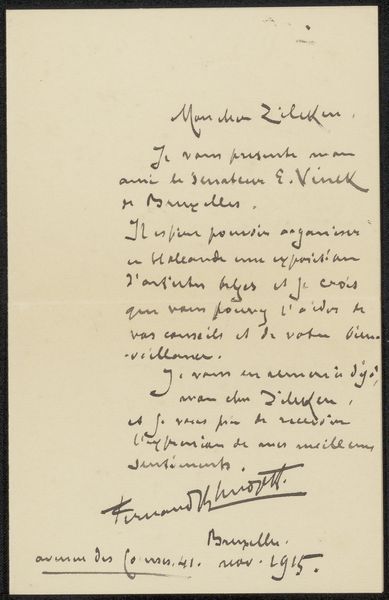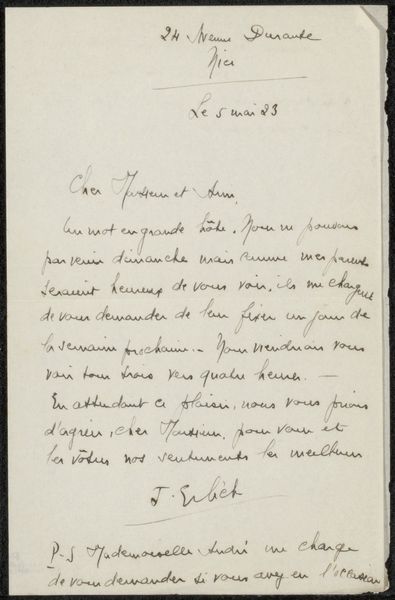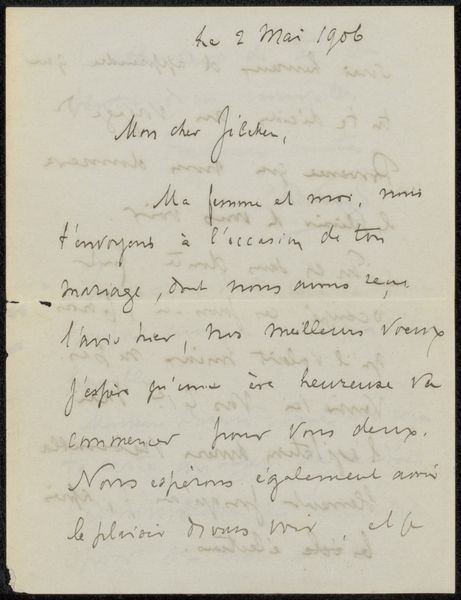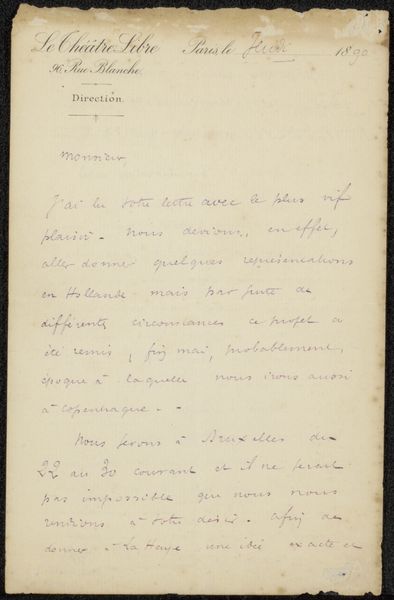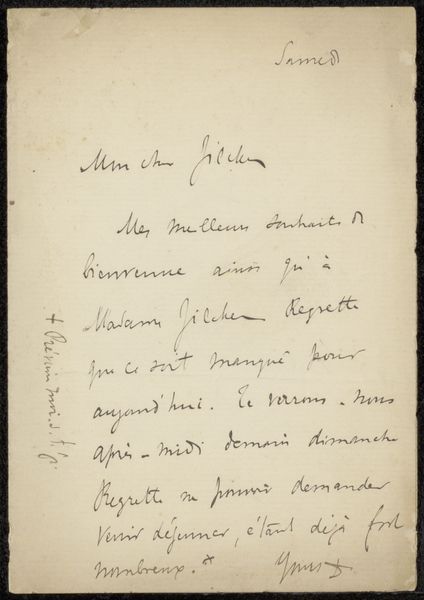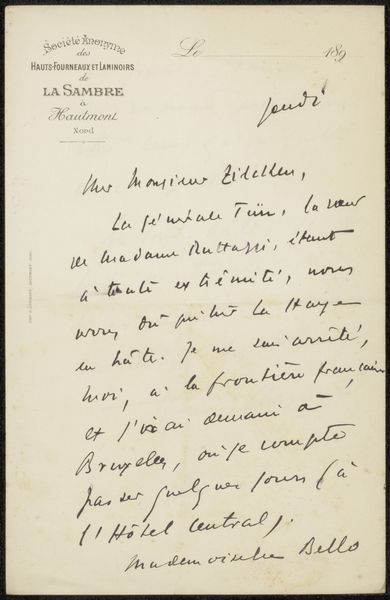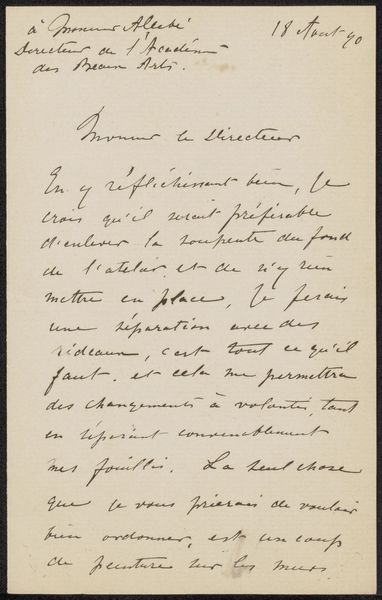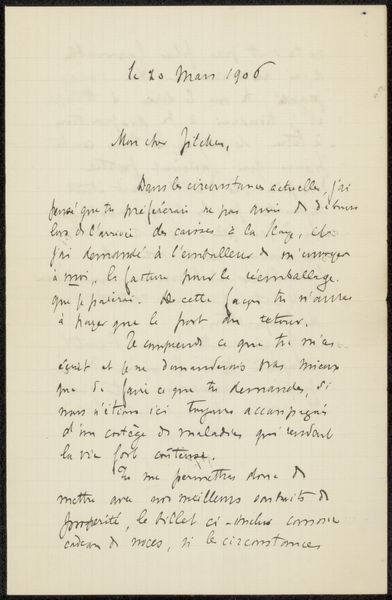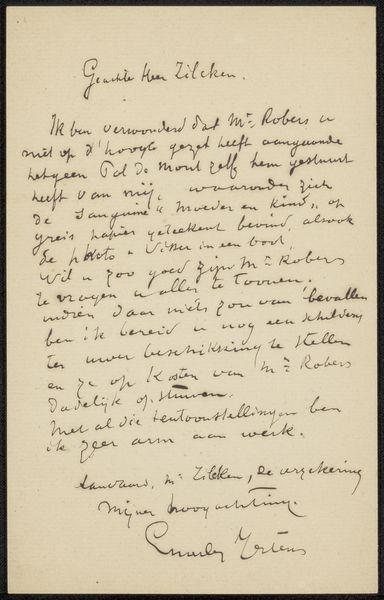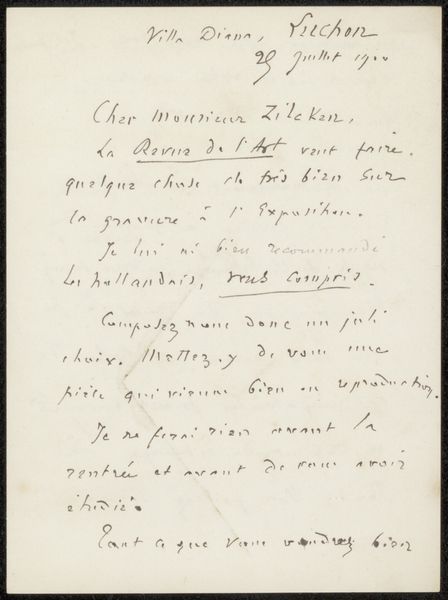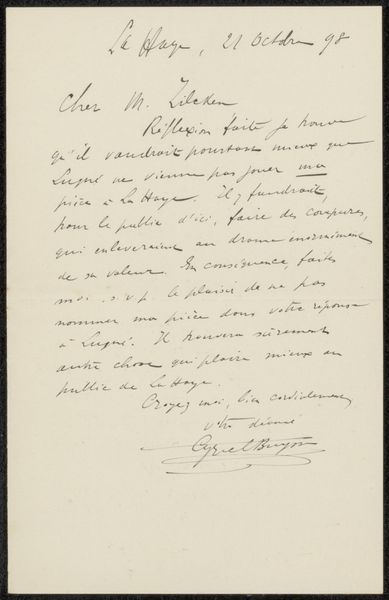
drawing, paper, ink, pen
#
portrait
#
drawing
#
comic strip sketch
#
hand-lettering
#
hand drawn type
#
hand lettering
#
paper
#
personal sketchbook
#
ink
#
hand-drawn typeface
#
pen-ink sketch
#
pen work
#
sketchbook drawing
#
pen
#
sketchbook art
Copyright: Rijks Museum: Open Domain
This letter to Alphonse Stengelin, written in 1917 by Roger Louis de Oberkampf Dabrun, bears the weight of an era defined by war and upheaval, yet speaks of personal affairs. Here, the handwriting itself becomes a potent symbol. The letter’s script, looping and hurried, echoes the societal anxieties of the time; it is a tangible link to the writer’s state of mind and immediate context. Consider how handwriting has served across different cultures and epochs to signal identity and intent, evolving from sacred script to personal expression. Just as Renaissance artists revived classical forms to convey humanist ideals, the act of handwriting in the early 20th century, with its immediacy, reflects a desire for direct, human connection amidst mechanized warfare. The emotional power here lies not in grand gestures, but in the quiet urgency of personal communication, a testament to enduring human needs, regardless of historical tumult.
Comments
No comments
Be the first to comment and join the conversation on the ultimate creative platform.
